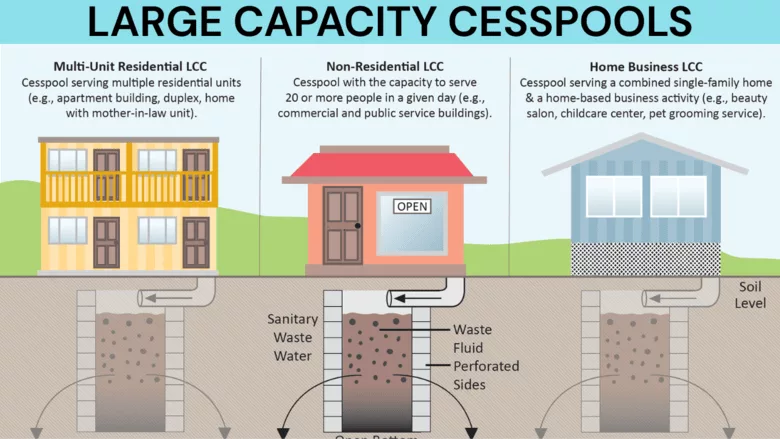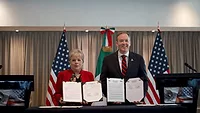Hawaii Struggles with a Massive Cesspool Crisis
The Push to Change Comes Amid Push for Cleaner Water and Coral Reef Protection

Image Courtesy of the EPA
Hawaii is facing mounting pressure to clean up its act—literally—when it comes to cesspools.
These outdated sewage systems, still scattered across the islands, release roughly 55 million gallons of untreated wastewater into the ground every day, leaching harmful nutrients like nitrogen and phosphorus into drinking water sources and delicate marine ecosystems. The result: degraded groundwater, algal blooms, and dying coral reefs.
Cesspools, which collect and discharge raw sewage directly into the earth, have long been a quiet but critical threat to Hawaii’s environment. In fact, Hawaii was the last U.S. state to ban new cesspools—a move only made in 2016 under Governor David Ige, following widespread concern over pollution and reef decline.
The state now faces the challenge of converting or closing tens of thousands of existing cesspools by January 1, 2050, as mandated by Act 125, passed in 2017. The law requires all cesspools to either upgrade to septic systems, switch to aerobic treatment units, or connect to municipal sewer systems. However, residents have voiced concerns at public meetings, saying the cost of upgrades—often tens of thousands of dollars—is unaffordable for many homeowners.
While the state once offered some relief through Act 120, which provided a temporary tax credit of up to $10,000 for cesspool conversions, that program expired in 2020. Now, homeowners are largely on their own unless new funding measures are introduced.
Meanwhile, the U.S. Environmental Protection Agency (EPA) continues to enforce a separate ban on large-capacity cesspools, in place since 2005. These systems, which serve multiple residences or commercial sites, are banned under the Safe Drinking Water Act due to the serious risks they pose to public health and the environment.
Marking the 20th anniversary of the federal ban, the EPA announced settlements to close five illegal large-capacity cesspools in Kaua‘i and Hawaii Island, owned by the Harry & Jeanette Weinberg Foundation, Haili Moe, Inc., and Hale Nanea. Combined, the settlements resulted in over $230,000 in civil penalties.
“These closures are another step toward cleaner groundwater, safer drinking water, and healthier beaches in Hawaii,” said Josh F.W. Cook, EPA Pacific Southwest Regional Administrator.
With 99% of Hawaii’s drinking water sourced from groundwater, the stakes remain high. As time ticks toward the 2050 deadline, the state faces a race against both environmental damage and economic hardship. Without significant financial aid or streamlined upgrade programs, residents may struggle to meet the mandate—leaving Hawaii’s waters at continued risk.
Looking for a reprint of this article?
From high-res PDFs to custom plaques, order your copy today!









